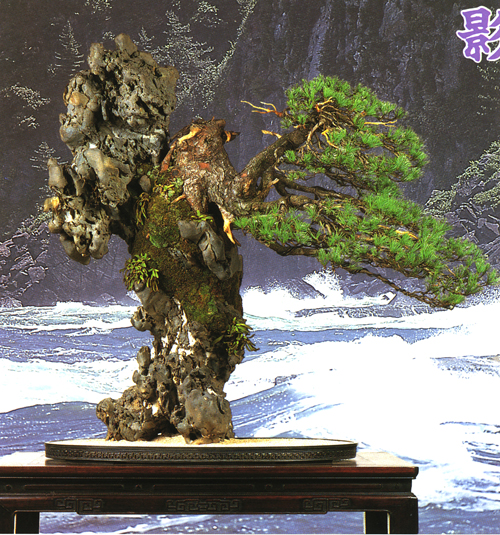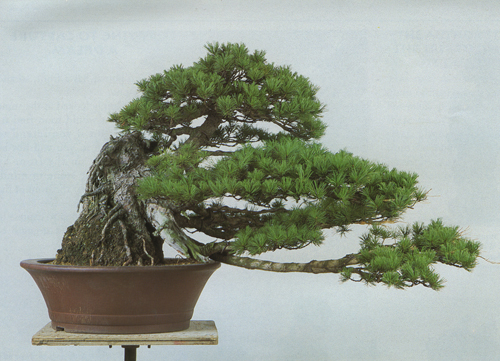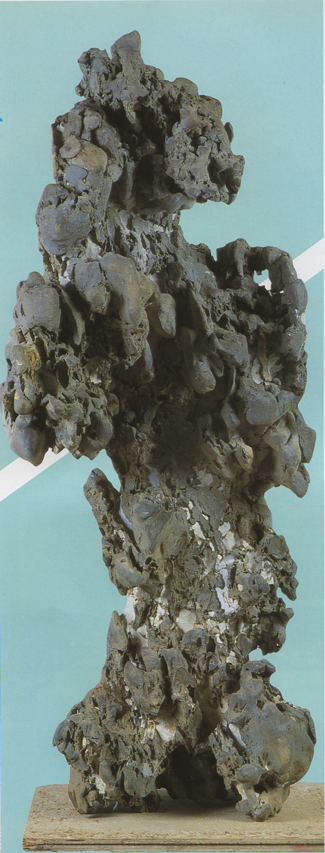
Though there is something dramatic and wonderful about this tree, there are a couple things that I’m not sure about. Most disturbing is the messy background that distracts from the tree. It’s actually worse in the original (Bonsai Today issue 56), but Photoshop helped solve part of the problem. The other more subjective issue is the rock, particularly the upper part. Though it is quite strong, to me it’s just not that attractive (though the more I get used to it, the less it bothers me). The tree is great with its powerful aged trunk, the way it clings to the cliff (it it just me, or does it look a little like a small animal to you?) and its dynamic movement. Its sweep also provides a counter balance to the weight of the rock.
Transformation
The original article in Bonsai Today issue 56 shows the steps of a transformation that starts with a large unusual rock and a tree that is already pretty good (both are below), and ends with the same tree (now much better than pretty good) clinging to the large unusual rock. The artist is the famous bonsai master, Kunio Kobayashi.
Root-on-rock vs Root-over-rock
The finished tree is a root-on-rock bonsai as opposed to the root-over-rock bonsai it was before the transformation.

Before. The tree, an already well established Japanese white pine (aka Japanese five needle pine).
 The rock.
The rock.
That is a lot uglier than before
I used to view clinging-to-rock bonsai literally, as a tree clinging to a rock. But I’ve begun to see them mostly now as a detail of a cliff side upon which a tree grows, with the rest of the cliff or mountain being the part of the image that is “outside of the frame.”
In that context, this planting succeeds well. It’s a very natural, wild-in-a-good-way-looking tree that bears the scars of boulders hitting it and other similar fates.
What would really tie the whole thing together is if Kobayashi put muck, moss, and leafy accents above the tree as well. So what if there are no pine roots up there to access the moisture? The top of the rock doesn’t match the bottom of the rock, and with a little muck and moss the planting would be dramatically improved in about 15 minutes.
Thanks Al,
I hadn’t thought of it that way, but maybe that’s what bothered me about the top of the rock.
Thanks Matt,
That might just be the difference between paper and digital. The background was even worse on my screen, so I tried to soften it some in photoshop. Still doesn’t look that good.
It’s just a bad rock, in my opinion, but we all have individual tastes
I love your blog Wayne, read it every day. keep up the good work!
Thanks for your kind words Matt. We’ll keep posting as long as you keep reading. And a comment every now and then makes my day.